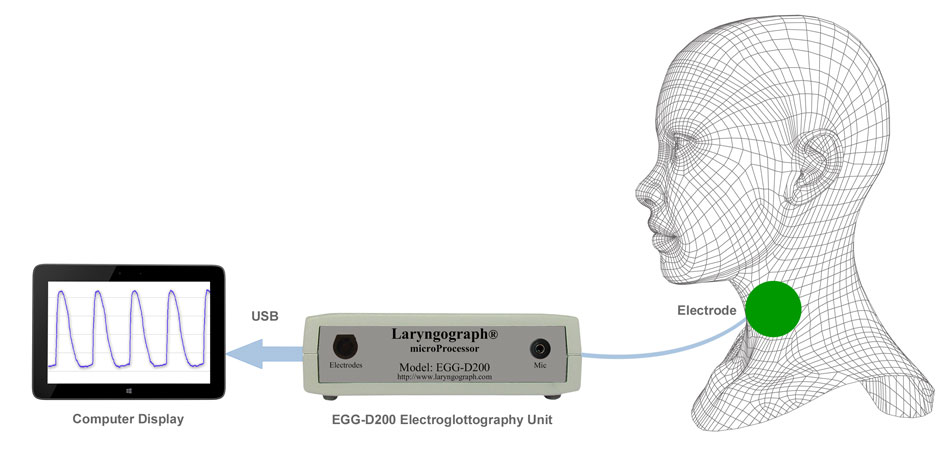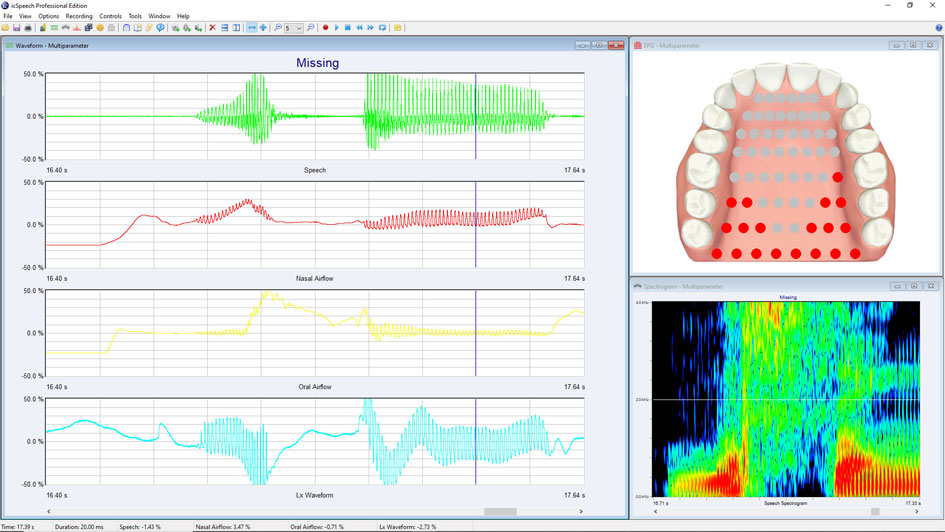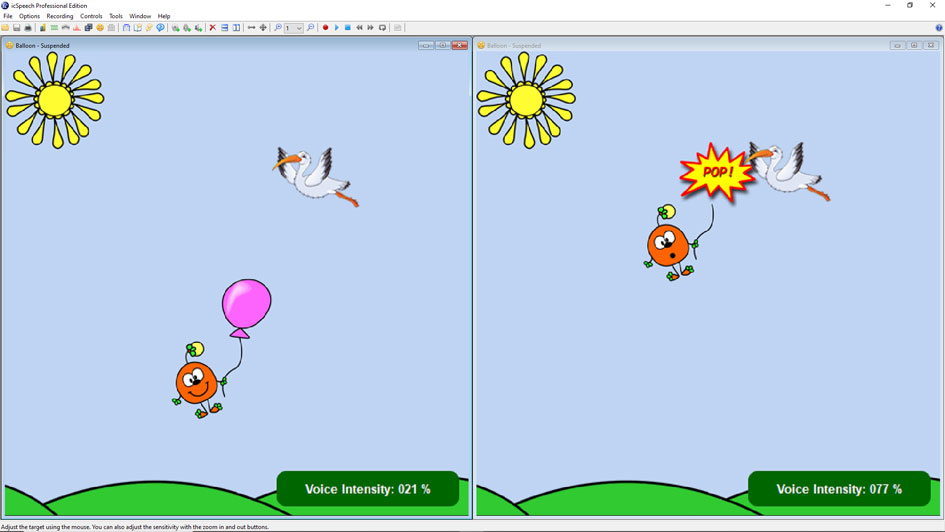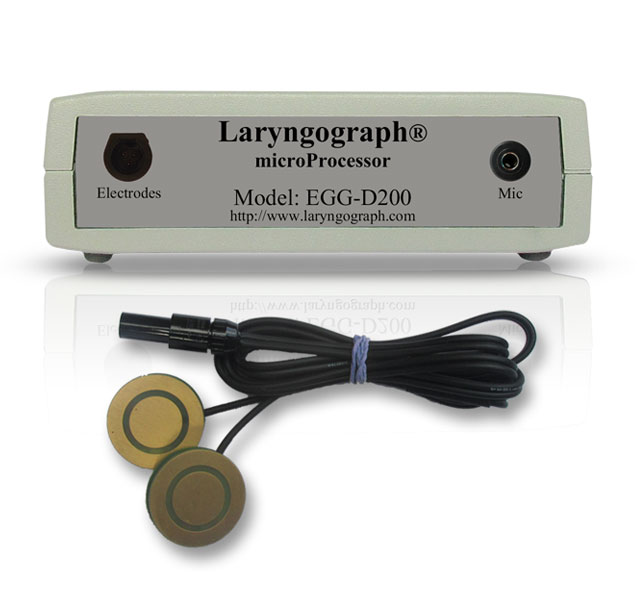EGG-D200 Electroglottography System
Electroglottography (EGG) is a non-invasive technique of monitoring vocal fold vibration by sensing the electrical conductance between two electrodes placed on the neck, either side of the thyroid cartilage. The EGG-D200 is a portable electroglottography system that provides qualitative and quantitative information on vocal fold vibration.
How electroglottography works
Electroglottography operates by sensing the electrical conductance between two electrodes placed on the neck, either side of the thyroid cartilage. Each gold plated electrode consists of an inner disk surrounded by an outer guard-ring, and is held in position by an elastic neckband.

On application of a constant voltage, the electroglottograph measures the varying electrical conductance between the electrodes in terms of the current flowing between them. Its output waveform Lx (larynx excitation) depicts this current flow as a function of time, which will be at a maximum when the vocal folds are in contact and at a minimum when they are apart.
Software options
Speech Studio
Speech Studio is a dedicated electroglottography Windows application that provides recording, real-time analysis and visual feedback functions. Its advanced quantitative analysis of connected speech produces instantaneous results with a range of graphs and parametric measurements.

Features include:
- Real-time displays: waveforms, frequency (Fx), contact quotient (Qx), spectrograms
- Records data to standard PCM WAV files
- Multi-Dimensional Voice Program (MDVP) on sustained phonation
- Dynamic Voice Range Profile
- Distribution of Fx, Qx and Ax
- Irregularity measures of Fx and Qx
- Real-time visual feedback
- Comparison of different recordings
- Windows 10, 8, 7 and Vista compatible
icSpeech Professional Edition
The EGG-D200 electroglottography system is also compatible with the multiparameter speech visualisation and analysis package icSpeech Professional Edition, which supports a wealth of additional features.


When used in combination with icSpeech Professional Edition, the following electroglottography parameters are available:
| Parameter | Description |
|---|---|
| Lx waveform | Unfiltered Lx signal |
| Lx intensity | Low pass filtered Lx envelope |
| Fx frequency | Fundamental frequency of excitation derived from the Lx waveform |
| Closed quotient | Percentage of each glottal cycle during which the vocal folds are closed |
| Jitter factor | Percentage frequency variation of vocal fold vibration over 10 glottal cycles |
| Shimmer factor | Percentage amplitude variation of vocal fold vibration over 10 glottal cycles |
Additional features include:
- Multiple displays: bar, waveform, spectrogram and video
- Six games with adjustable targets and rewards
- Extensive analysis features
- Data export facility
- Recorder with picture and word prompting
- Combines EGG with EPG, nasometry, airflow and video data
- Windows 10, 8, 7 and Vista compatible
Specification
| Supported operating systems | Windows 10, 8, 7 or Vista |
|---|---|
| Supported computers | Desktop, laptop, tablet |
| Connectivity | USB 1.0, 2.0, 3.0 |
| Power | USB bus powered |
Get quote
The electroglottography package includes:
- EGG-D200 unit
- Adult electrode set
- Medium and large neckbands
- Omni-directional microphone
- USB cable
- User manual
- 12 months guarantee
- Speech Studio (optional)
- icSpeech Professional Edition (optional)
